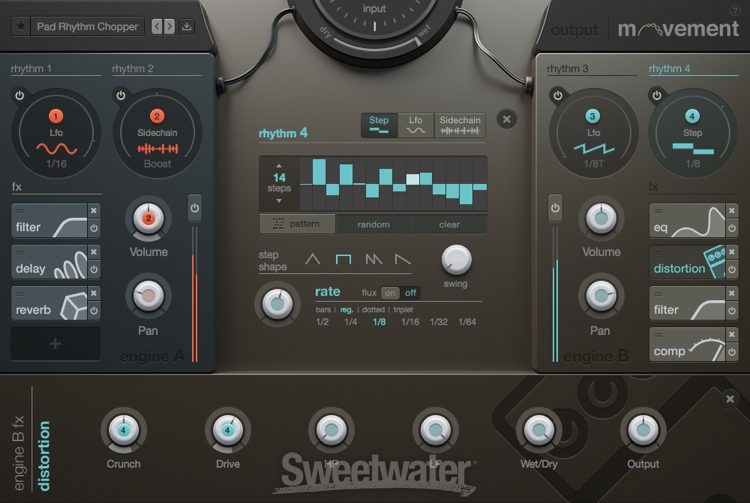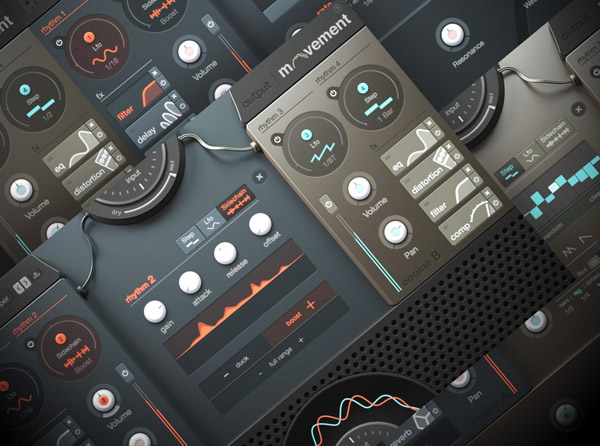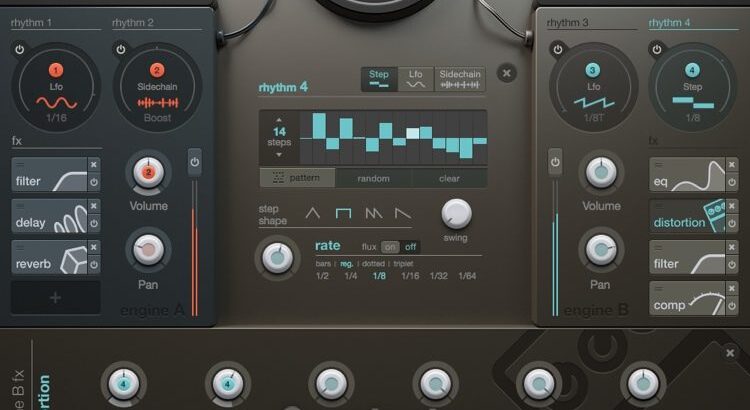Output Movement Crack + Product Key

Output Movement Crack Your sounds, crazy rhythms. Add extreme effects to any input in real-time, in the studio or on stage. Four synchronized rhythm engines unite to combat outdated sounds. LFO, step sequencer, side chains, macro controls, and Output’s proprietary Flux mode combine in rhythmic serendipity. With PORTAL, granular synthesis takes your sounds to another dimension. Easily change any audio input – VST, drums, vocals, live guitar, whatever – in a new and musical way.
Get playable granular effects around the music you create to turn one idea into endless others. THERMAL makes it easy to experiment and compose new distortion sounds. A user-friendly experience is a key to controlling the extremely powerful multi-stage motor. Far beyond traditional multiband distortion, THERMAL boosts creativity with limitless features like band splitting, which activates crossover filters for deeper frequency control. PORTAL granular synthesis takes your sounds to another dimension. Easily change any audio input – VST, drums, vocals, live guitar, whatever – in a new and musical way. Get playable granular effects around the music you create to turn one idea into infinitely more.
You may also like this Amplitube Crack
Output Movement Crack Features
- Welcome to MOVEMENT, an exhilarating experience and a powerful effects engine that adds simple mind-blowing beats to any input –
- from guitars and keyboards to synths, pads, drums, and even full mixes – in real-time.
- Designed for use in the studio as well as live performance, the creators of EXHALE, SIGNAL, and REV bring you a tool that expands the possibilities of your music.
- Figure 37.1 shows that the dynamic response components of the amplifier include delay, rise, and ring times.
- The delay time is small and is almost entirely due to the propagation delay of the amplifier.
- There is no exit movement during this interval. During the ramp-up time, the drive moves to the end value at the highest possible speed.
- The ring time defines the range in which the amplifier recovers from panning and stops moving within a defined error band.
Output Movement Crack System Requirements
- A temperature gauge, commonly known as a thermometer, is a device that displays the temperature of the process being monitored.
- The display can be a pointer on a dial or a digital display. THCs, which produce millivolts as a function of temperature, are also used for digital thermometers.
- Temperature measurement provides the thermal state of a homogeneous system.
- Temperature measurement generally requires direct or indirect contact (via a thermowell) between the process and the sensor so Output Movement Activation Key.
- That the sensor responds quickly to the process temperature, either heat or temperature in turn. A piston filled with fluid (transmission fluid) is placed at the measuring point.
- The transfer fluid can be an inert gas such as nitrogen or a liquid such as mercury or alcohol.

What’s new Output Movement Crack
- Bimetallic elements are also used, which bend in one direction when heat is applied to an assembly of two bonded metals with different coefficients of expansion, as specified in section 3.1.
- Appropriate measures are provided to rectify errors caused by case changes and capillary expansion due to ambient temperature changes.
- To minimize the capillary expansion effect, an Invar rod is inserted into the capillary to reduce the volume of liquid Output Movement Product Key.
- The capillary is well protected from mechanical damage.
- It is the simplest type of temperature measuring device because it is a graduated glass bulb, essentially a small volume reservoir chamber that is filled with mercury and inserted into the process.
- When heated, mercury expands much more than glass (about six times) and is forced up the glass tube.
- The glass tube is a small tube with a thin bore attached to the opposite end of the bulb.
- For a given temperature, the mercury will rise to a certain point.
How to install it?
- The expansion path is then calibrated with a reference temperature bath.
- The glass tube is unmarked, but the graduations are etched on metal scales, with the tube and scale enclosed in a single case.
- The mercury in some glass thermometers is calibrated for full immersion and others for partial immersion.
- The liquid can also be alcohol instead of mercury, which has a linear expansion coefficient even six times that of mercury.
- The receiving side can be a bellows, diaphragm, Bourdon tube, coil, capsule or helical pressure sensing element, or simply a glass tube with a scale.
- The total time elapsed from when the input is applied until the output reaches and stays within a specified error range around the final value is the settling time.1
Conclusion
It is one of the most reliable temperature indicators. It uses a suitable metal or metal alloy with the required coefficient of linear expansion. One of them is Invar, which expands very little when exposed to heat. Welded to another metal (alloy) having a better coefficient of linear expansion and rolled to the desired thickness, the combination is used in bimetallic gauges. Alloys with very different linear expansion coefficients are used for short temperature ranges, while metals (alloys) with narrower linear expansion coefficients are used for longer temperature ranges Output Movement Crack Vst.
The term used to describe the thermal activity of a bimetal is flexibility. The actual movement of a bimetallic strip is proportional to its flexibility. One end of a straight strip is fixed and the other bends or flexes, which varies with temperature as the square of its length and inversely with thickness. It can be used in a helical configuration where the angular deviation is determined by the same factors. The needle attached to the free end is then allowed to indicate its movement on a properly calibrated scale.
